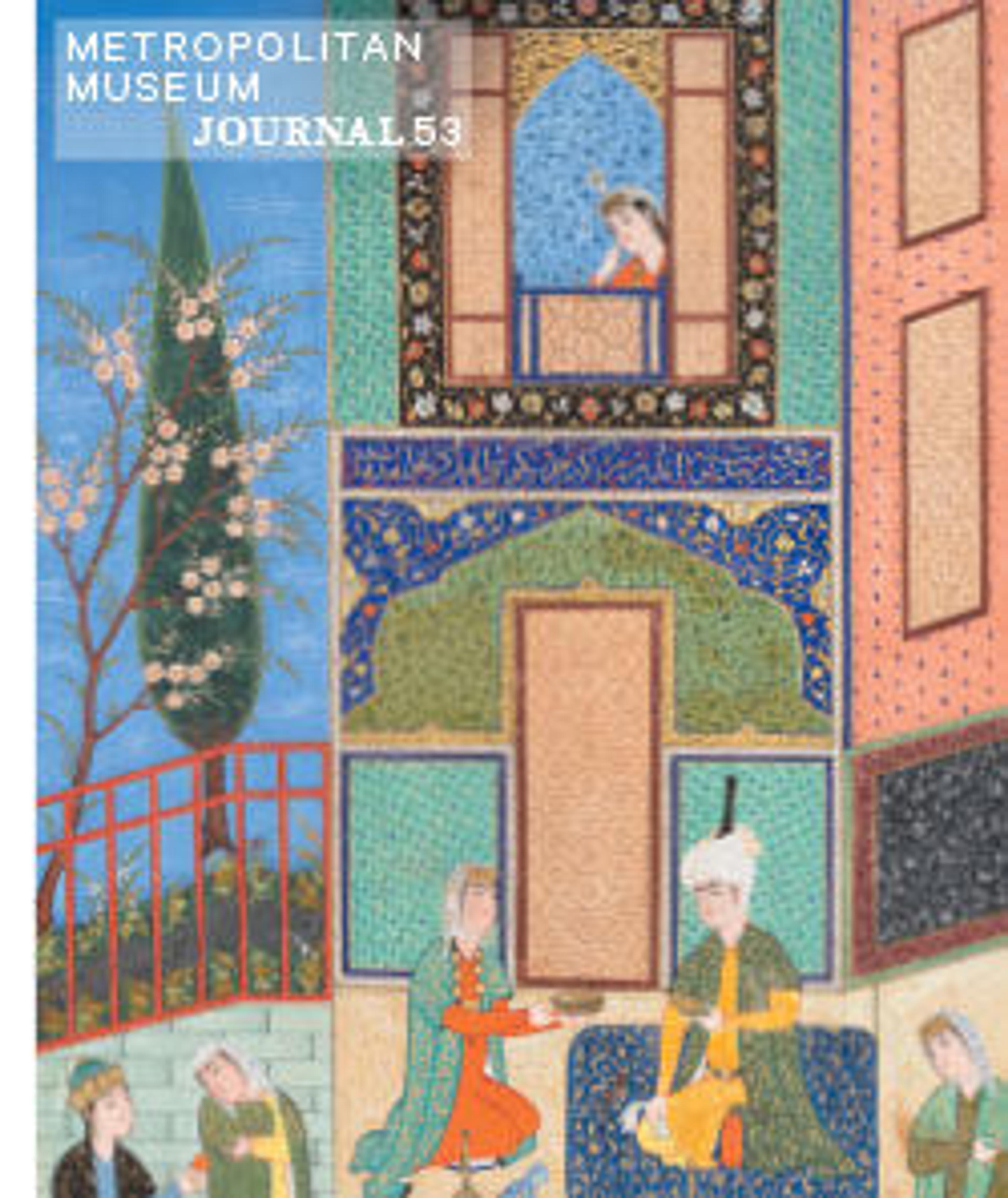"The Iranians Mourn Farud and Jarira", Folio 236r from the Shahnama (Book of Kings) of Shah Tahmasp
The Shahnama is filled with tragic events and moments of intense drama. On the page illustrated here, the painters have depicted the mourning of Iranians over the tragic destiny of Farud, the son of Prince Siyavush, and Jarira, his mother. After witnessing her son's death, Jarira ripped open her belly with a dagger. Then, lying down with her face against Farud's, she let herself die.
The scene is one of the most emotionally charged in the entire manuscript. The women pull out their hair and cry, the courtiers beat their heads in despair, while the the creased expressions on their faces convey intense compassion. Even though Islamic painting is considered to be idealized, the painters of this Shahnama reveal instead a profound awareness of human emotions, which are depicted with great sensitivity.
The scene is one of the most emotionally charged in the entire manuscript. The women pull out their hair and cry, the courtiers beat their heads in despair, while the the creased expressions on their faces convey intense compassion. Even though Islamic painting is considered to be idealized, the painters of this Shahnama reveal instead a profound awareness of human emotions, which are depicted with great sensitivity.
Artwork Details
- Title: "The Iranians Mourn Farud and Jarira", Folio 236r from the Shahnama (Book of Kings) of Shah Tahmasp
- Author: Abu'l Qasim Firdausi (Iranian, Paj ca. 940/41–1020 Tus)
- Artist: Painting attributed to Mirza Muhammad Qabahat
- Artist: Painting attributed to 'Abd al-'Aziz (active first half 16th century)
- Date: ca. 1525–30
- Geography: Made in Iran, Tabriz
- Medium: Opaque watercolor, ink, silver, and gold on paper
- Dimensions: Painting:
H. 11 1/4 in. (28.6 cm)
W. 7 5/16 in. (18.6 cm)
Entire Page:
H. 18 5/8 in. (47.3 cm)
W. 12 1/2 in. (31.8 cm) - Classification: Codices
- Credit Line: Gift of Arthur A. Houghton Jr., 1970
- Object Number: 1970.301.35
- Curatorial Department: Islamic Art
More Artwork
Research Resources
The Met provides unparalleled resources for research and welcomes an international community of students and scholars. The Met's Open Access API is where creators and researchers can connect to the The Met collection. Open Access data and public domain images are available for unrestricted commercial and noncommercial use without permission or fee.
To request images under copyright and other restrictions, please use this Image Request form.
Feedback
We continue to research and examine historical and cultural context for objects in The Met collection. If you have comments or questions about this object record, please contact us using the form below. The Museum looks forward to receiving your comments.
